Zenity — Create Graphical Dialog Boxes in the Command Line
Linux is famous for its command Line operations, but with the vast usage of Linux, it remains no more biased towards command-Line, it equally relies on GUI(Graphical User Interface).
Here, we will be discussing the creation and execution of a simple Graphical Dialog box using a GTK+ application called “Zenity“.
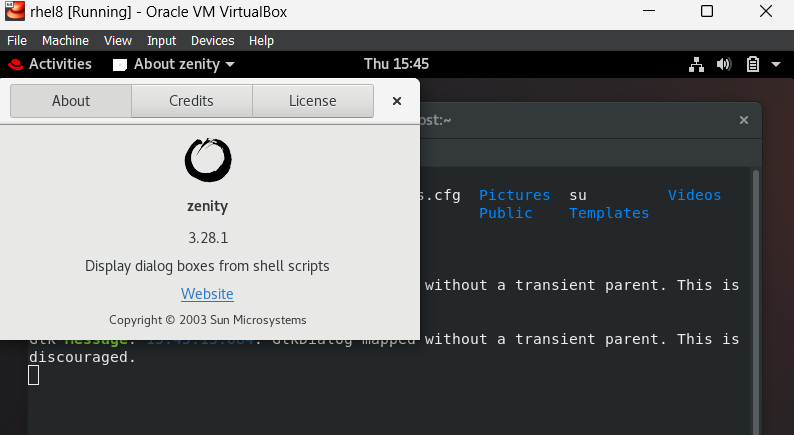
What is Zenity?
Zenity is an open-source and cross-platform application that displays GTK+ Dialog Boxes in the command line and uses shell scripts. It allows one, to ask and present information to/from shell in Graphical Boxes.
The application lets you create Graphical dialog boxes in command-line and makes the interaction between the user and the shell very easy.
You must be anxious about the Full form of GTK+ : “Good to Know.”
Zenity is very simple especially when you don’t want to go to complex programming.
Installation of Zenity in Linux
Zentity is by default installed & available in the repository of most of the Linux distribution such as CentOS/Ubuntu/Rhel 8…etc.
You can check if is installed onto your machine or not by executing following commands…..

If it’s not installed, you can install it using Apt or Yum command:


Zenity Basic Dialog Boxes
— which can be implemented directly from the command line.
- a quick calendar dialog box


2. An Information Dialog box
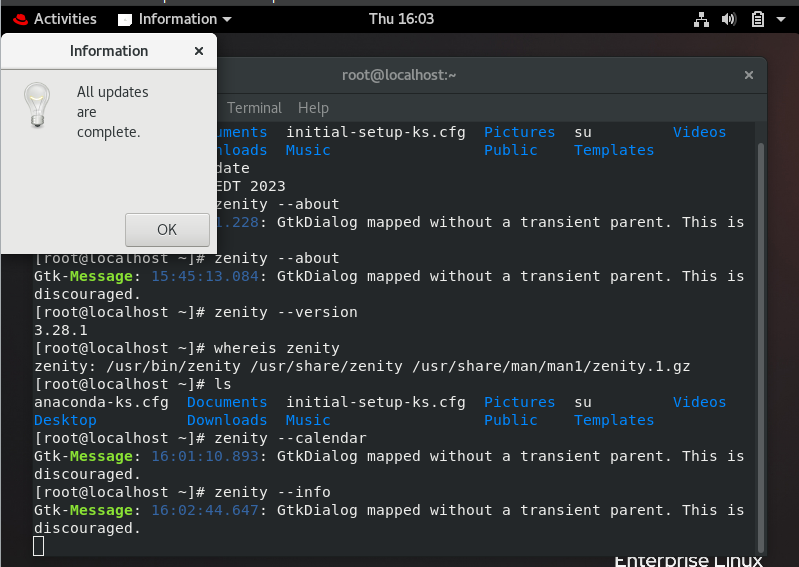
3. An error Dialog Box
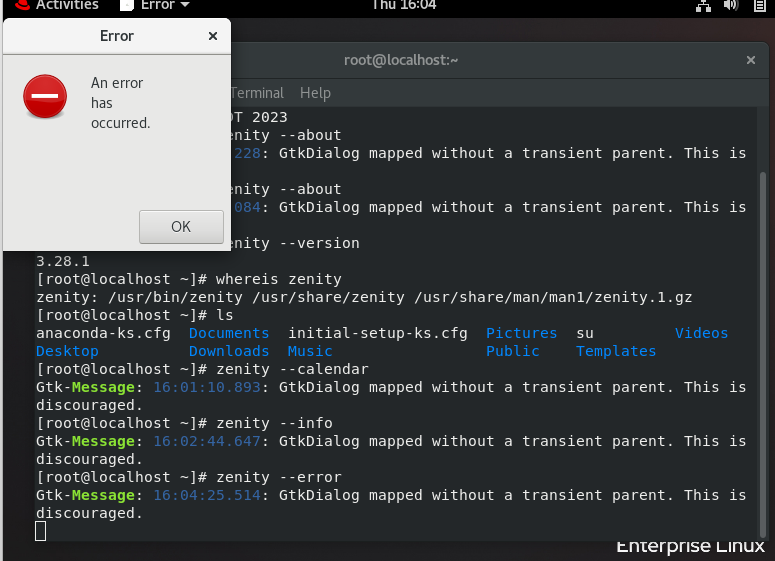
4. A General text Entry Dialog Box


5. A question Dialog box

6. A progress Bar
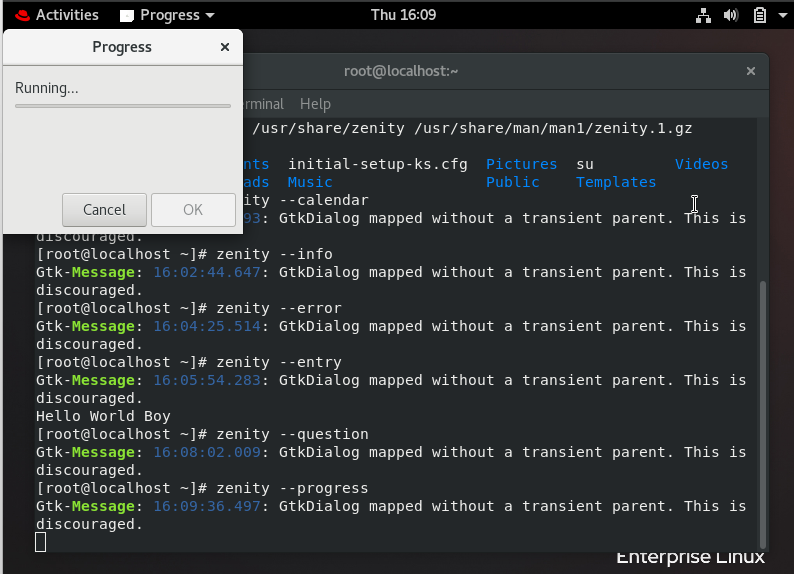
7. Scale Dialog
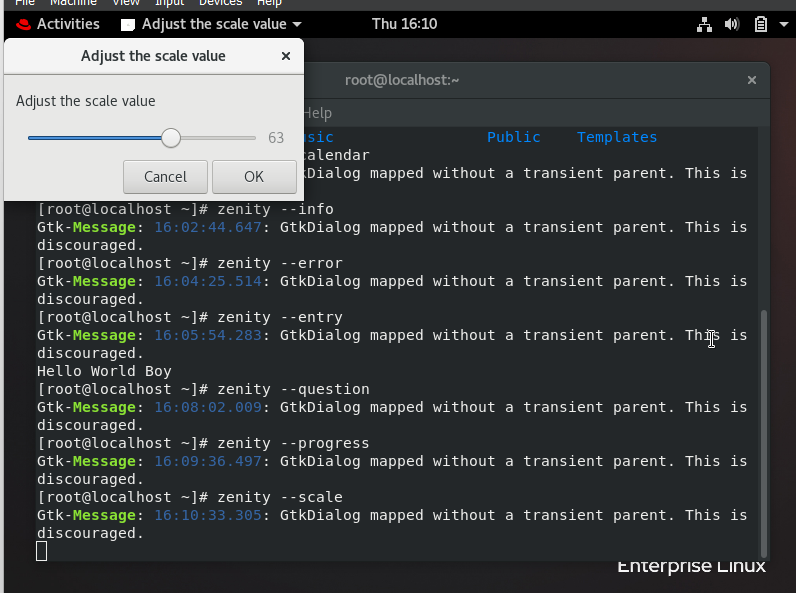
8. A Password Dialog
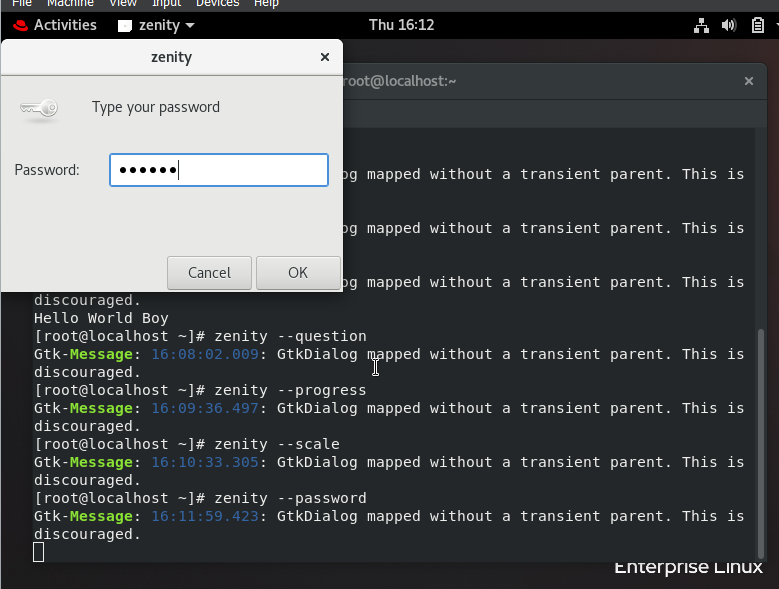
9. A Form Dialog box

10. An about Dialog

Connect with us 👇👇👇
E-mail: krishabh080@gmail.com
LinkedIn: https://www.linkedin.com/in/krishabh080/
Thank you for joining us on this GUI view of Linux…